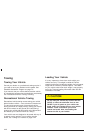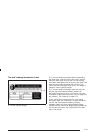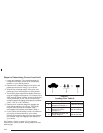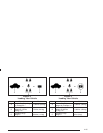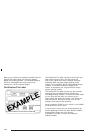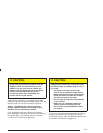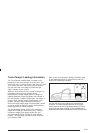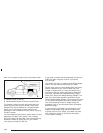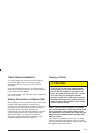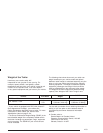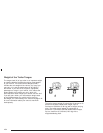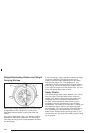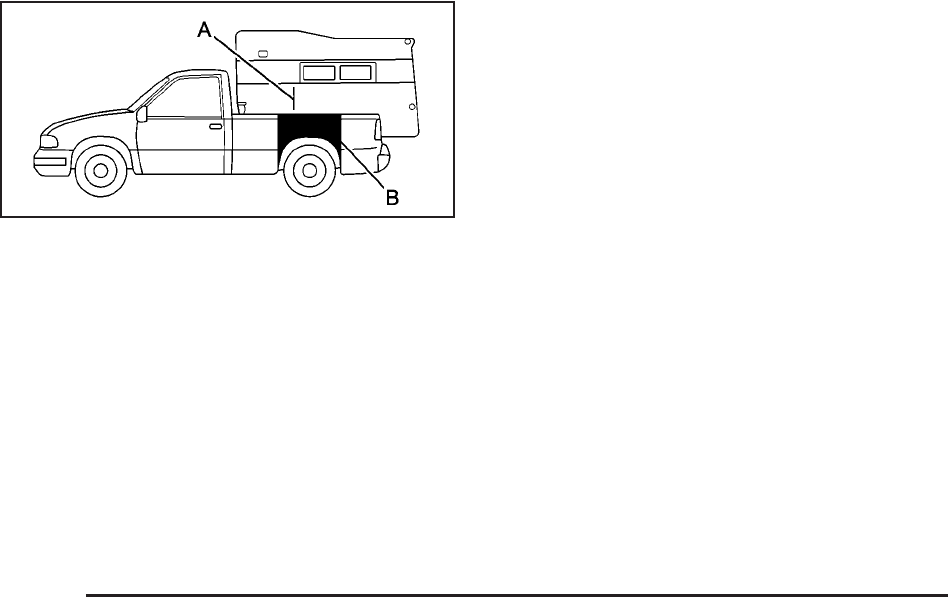
Here is an example of proper truck and camper match:
A. Camper Center of Gravity
B. Recommended Center of Gravity Location Zone
The camper’s center of gravity should fall within the
center of gravity zone for your vehicle’s cargo load.
Campers can only be installed in a long box pickup.
Check your Truck-Camper Loading Label on the
passenger’s door to determine if your vehicle can carry
a slide-in camper.
You must weigh any accessories, trailer hitches or other
equipment you add to your vehicle. Then, subtract
this extra weight from the CWR. This extra weight may
shorten the center of gravity zone for your vehicle.
Your dealer can help you with this.
If your slide-in camper and its load weigh less than the
CWR, the center of gravity zone for your vehicle
may be larger.
Your dealer can help you make a good vehicle-camper
match. He’ll also help you determine your CWR.
Secure loose items to prevent weight shifts that could
affect the balance of your vehicle. When the truck
camper is loaded, drive to a scale and weigh on the
front and on the rear wheels separately to determine
axle loads. Individual axle loads should not exceed
either of the Gross Axle Weight Ratings (GAWR). The
total of the axle loads should not exceed the Gross
Vehicle weight Rating (GVWR). These ratings are given
on the vehicle certification label that is located on the
rear of the passenger’s door. If weight ratings are
exceeded, move or remove items to bring all weights
below the ratings.
If you want more information on curb weights, cargo
weights, cargo weight rating and the correct center
of gravity zone for your vehicle, your dealer can help
you. Just ask for a copy of “Consumer Information,
Truck-Camper Loading.”
4-50



